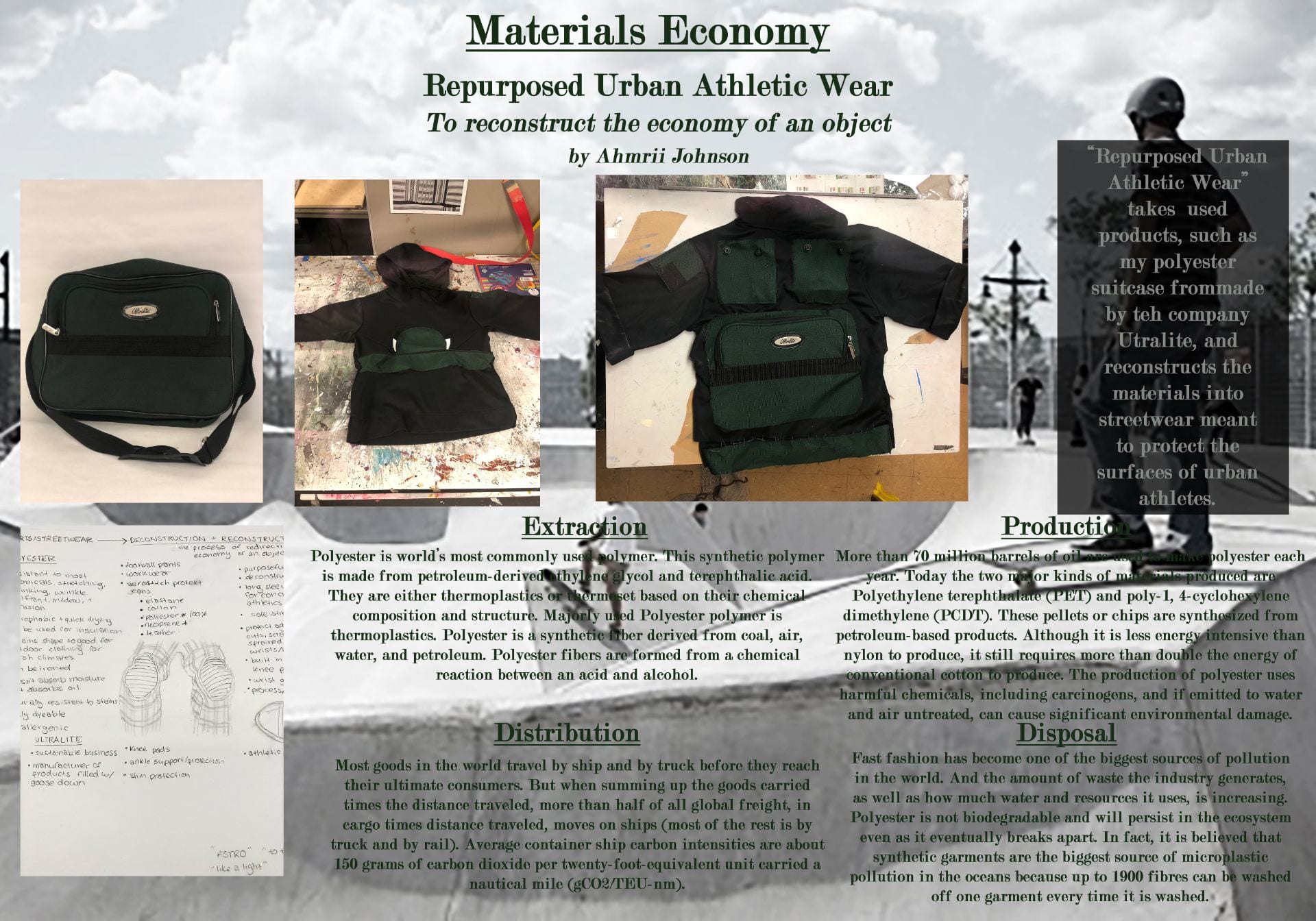Ahmrii Johnson
Repurposed Urban Athletic Wear
Materials Economy – Making Art With the Thought of Sustainability
Extraction
Polyester is the world’s most commonly used polymer. This synthetic polymer is made from petroleum-derived ethylene glycol and terephthalic acid. They are either thermoplastics or thermoset based on their chemical composition and structure. Majorly used Polyester polymer is thermoplastics. Polyester is a synthetic fiber derived from coal, air, water, and petroleum. Polyester fibers are formed from a chemical reaction between an acid and alcohol.
Production
More than 70 million barrels of oil are used to make polyester each year. Today the two major kinds of materials produced are Polyethylene terephthalate (PET) and poly-1, 4-cyclohexylene dimethylene (PCDT). These pellets or chips are synthesized from petroleum-based products. Although it is less energy intensive than nylon to produce, it still requires more than double the energy of conventional cotton to produce. The production of polyester uses harmful chemicals, including carcinogens, and if emitted to water and air untreated, can cause significant environmental damage.
Distribution
Most goods in the world travel by ship and by truck before they reach their ultimate consumers. But when summing up the goods carried times the distance traveled, more than half of all global freight, in cargo times distance traveled, moves on ships (most of the rest is by truck and by rail). Average container ship carbon intensities are about 150 grams of carbon dioxide per twenty-foot-equivalent unit carried a nautical mile (gCO2/TEU-nm).
Disposal
Consequently, the emphasis on speed, high-volume, and cost-cutting has led many of us to view our clothing as disposable. Fast fashion has become one of the biggest sources of pollution in the world. And the amount of waste the industry generates, as well as how much water and resources it uses, is increasing. Polyester is not biodegradable and will persist in the ecosystem even as it eventually breaks apart. In fact, it is believed that synthetic garments are the biggest source of microplastic pollution in the oceans because up to 1900 fibres can be washed off one garment every time it is washed.
Project Introduction
This project and the exploration of the relationship between the environment and human innovation, revolves around the materials that are intentionally designed or formed into objects, and how objects go through a history from extraction, production, distribution, consumption and disposal. Learning the importance of environmental sustainability in design, and how objects factor into notions of Cradle to Grave and Cradle to Cradle. Learning about materials and their lifecycle through the deconstruction of an object , research of materials, used to make an object and problem solving how to redirect the parts of the object into another object either functional or representational. The United States, with over 325 million people, is growing at a faster rate than any other major developed nation. Many countries depend on, and encourage, increasing consumerism as a vessel for economic growth. Every day we are bombarded with advertisements asking us to consume more. As our consumption increases, our expectations keep growing and we keep accumulating more things further feeding an unsustainable cycle.
Info-Graphic

